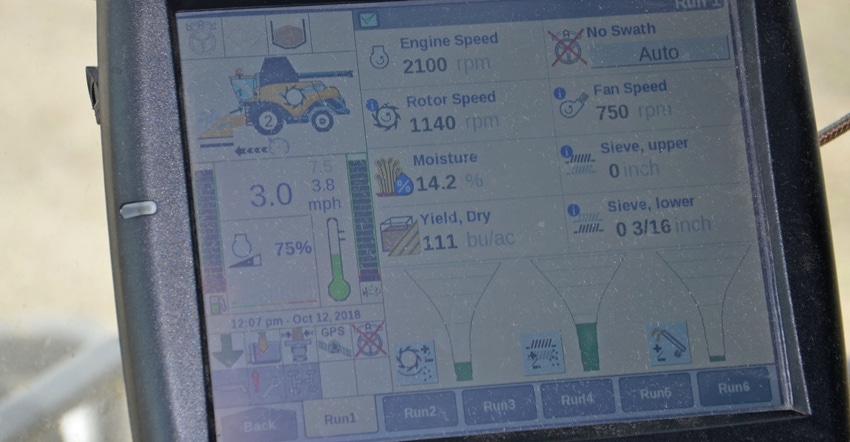
What does it take to get higher soybean and corn yields? It’s a simple question, but you will find lots of complex answers if you start looking on the web or listening to ag companies. However, there are some basic things you can do to set the stage.
“We’ve competed in some local yield contests over the last two or three years just to begin to see what it takes to grow higher yields,” explains Preston Crandell, Paris, Ill. He farms with his dad, Ron, and his grandpa, Pete. They farm in both Illinois and Indiana.
The Equity, an independent cooperative with multiple locations in central and eastern Illinois, sponsors high-yield programs for both soybeans and corn: Go 100 Soybeans and Go 300 Corn. The Crandells participate in the programs.
In 2020, they reached 113 bushels per acre of soybeans and placed first on 1 weighed acre in the program, using Asgrow’s AG-36X6 variety. They also had other entries that topped 100 bushels per acre. Yields on soybeans across the farm tended to be up in 2020.
“Planting date was likely part of it,” Preston says. “We were able to plant soybeans in early April in 2020. Those fields yielded considerably better than fields planted in May.”
Because they raise white corn, which needs a long-growing season, and they only have one planter — a Case IH 1245 15-inch row, split-row for planting crops — how the growing season unfolds dictates if they can plant some soybeans early in any one year. Corn is planted in 30-inch rows.
The early-planted beans were seeded at 150,000 seeds per acre, Preston says. Later beans were seeded at 175,000. About 90% of their soybeans receive seed treatment, and some are inoculated.
“Soil fertility is a big part of achieving higher yields,” Preston says. They have a routine soil sampling program where each field is sampled every four years.
“The highest yields in 2020 were on land that has received lots of cattle manure over the years,” he explains. “Good soil fertility and soil tilth is important.”
Corn yields
The Crandells reached 300.5 bushels per acre of corn in The Equity program in 2019 with Dekalb DKC63-00, a white corn hybrid, even though planting was somewhat delayed by the wet season. The planting date was a bit earlier in 2020, and they recorded 305 bushels per acre in a 1-acre weigh with a Dekalb hybrid.
“We apply most of our nitrogen preplant, but we split-applied some in 2020, and that really seemed to help,” Preston says. They applied 160 pounds per acre preplant and roughly another 40 pounds per acre with liquid nitrogen during the season.
Fungicides are also important where the Crandells farm. If fungicides are needed, they are applied around tasseling.
This year, Preston says they may try something different on some corn acres.
“We may apply Trivapro at V10 and then a generic fungicide around brown silk,” he says. Trying new things and comparing how they perform against your normal practices is a good way to learn as you search for higher yields, he says.
About the Author(s)
You May Also Like




